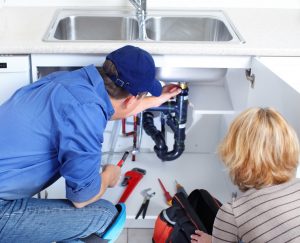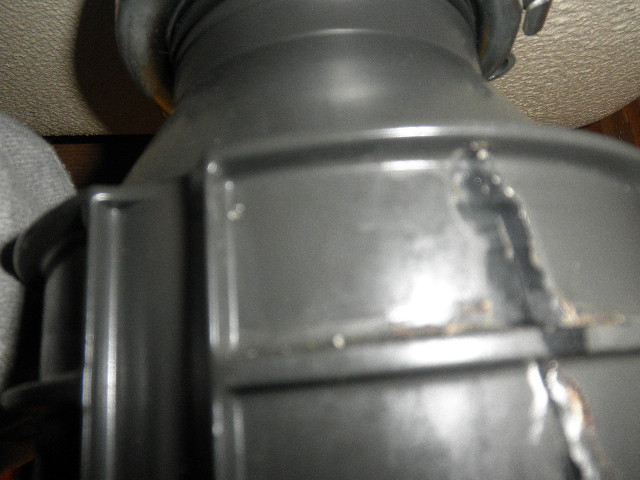Clear Techniques for Repairing a Leaky Garbage Disposal
Clear Techniques for Repairing a Leaky Garbage Disposal
Blog Article
They are making a number of great observations on the subject of Why Is My Garbage Disposal Leaking From the Bottom? in general in this great article down the page.

Garbage disposals are necessary cooking area home appliances that aid in getting rid of food waste efficiently. Nevertheless, a dripping waste disposal unit can be an aggravating and unpleasant problem to handle. Luckily, many leaks can be repaired quickly with a couple of easy steps. In this short article, we will talk about how to repair a leaking garbage disposal effectively.
Intro
Waste disposal unit are set up under kitchen area sinks and are designed to shred food waste into smaller sized pieces, allowing it to pass through the pipes system quickly. While these tools are usually trusted, leaks can happen in time due to deterioration, loosened connections, or damage to the unit.
Typical Reasons For Leaks in Waste Disposals
Worn Seals and Gaskets
Seals and gaskets play an essential function in protecting against water from leaking out of the waste disposal unit. In time, these parts can degrade, leading to leaks around the disposal system.
Loose Links
The links between the garbage disposal and the plumbing system can come to be loosened with time, creating water to leakage out throughout operation.
Fractures or Holes in the Disposal Unit
Physical damage to the garbage disposal, such as splits or openings in the housing, can also result in leakages.
Recognizing the Source of the Leak
Prior to attempting to fix a dripping waste disposal unit, it is important to identify the resource of the leakage. This can usually be done through visual inspection or by carrying out simple examinations.
Visual Inspection
Check the waste disposal unit unit meticulously for any type of indicators of water leakage. Pay very close attention to locations around seals, gaskets, and link points.
Evaluating for Leaks
One way to test for leaks is by running water via the disposal device and checking for any type of visible indications of leak.
Devices and Products Needed for Fixing a Dripping Garbage Disposal
Before starting the repair procedure, collect the needed tools and materials, consisting of a screwdriver, flexible wrench, plumber's putty, substitute seals or gaskets, and epoxy or patching product for repairing cracks or openings.
Step-by-Step Guide to Fixing a Dripping Waste Disposal Unit
Turn Off the Power
Prior to attempting any kind of repair services, guarantee that the power to the waste disposal unit unit is switched off to avoid the threat of electrical shock.
Situate the Leak
Recognize the precise location of the leak and establish the cause.
Tighten up Connections
Make use of a wrench to tighten up any type of loose links in between the disposal unit and the pipes system.
Replace Seals or Gaskets
If the leak results from used seals or gaskets, remove the old elements and replace them with new ones.
Patching Splits or Openings
For cracks or holes in the disposal system, usage epoxy or an appropriate patching product to secure the broken location.
Testing the Waste Disposal Unit After Repair Service
As soon as the repair work is total, evaluate the garbage disposal by running water with it to guarantee that the leak has actually been fixed.
Preventive Maintenance Tips to Stay Clear Of Future Leaks
To stop future leaks, it is vital to execute routine upkeep on your garbage disposal. This consists of keeping it clean, preventing putting non-food things or difficult things down the disposal, and periodically checking for leaks or various other problems.
Verdict
Finally, fixing a leaking waste disposal unit is a reasonably simple procedure that can be finished with basic tools and materials. By complying with the steps detailed in this write-up and exercising preventative upkeep, you can maintain your garbage disposal in good working condition and avoid costly repairs in the future.
What to Do About a Leaking Garbage Disposal
A leaking garbage disposal often goes unnoticed until you confront a sopping cabinet, a foul-smelling puddle, or an audible drip-drip-drip from the unit. The fix can be frustrating, too, because the leak can stem from a number of components in the system. Fortunately, with a little sleuthing, you can zero in on the leak and—depending on the exact location—stop the icky oozing and repair the component that caused it. Worst case scenario, if it turns out that the garbage disposal must be replaced, installing a new one is a reasonable do-it-yourself task for those with basic plumbing skills. Read on to keep the cash you’d otherwise hand over to a pro.
Prepare to find the leak
Prior to testing the garbage disposal for leaks, unplug it at the wall outlet and turn off the power from the breaker box to prevent electrical shock. Then insert a watertight sink stopper into your sink drain and wipe the unit dry with a clean cloth. In any handy container, mix a few drops of food coloring into a few cups of water, and pour the dyed water onto the sink stopper to help you locate the leak.
Investigate the source
the top, where the disposal meets the sink drain the side, where the dishwasher hose or main drain pipe connects to the disposal or the bottom of the unit Inspect each of these locations while gliding a light-colored rag over the unit; the dyed water will readily show on the rag and reveal the location of the leak. If a leak isn’t immediately apparent, remove the sink stopper and pour a few more cups of dyed water down the sink drain, then check for leaks again. Leaks near the top of the unit are more likely to show themselves while the sink is plugged, while side and bottom leaks are more noticeable while the sink is unplugged.
The metal sink flange that sits directly inside the sink drain is typically sealed around the top with plumber’s putty (a clay-like sealant) and then secured from under the sink with bolts. If the plumber’s putty deteriorates, or the bolts loosen, the flange can no longer form a watertight seal between the sink drain and the disposal—which could cause a leak at the top of the unit.
To reseal the leaky flange, you must first detach the garbage disposal. Start by loosening the screws securing the main drain pipe to the disposal, then loosen the screws in the metal clamp securing the dishwasher hose to the disposal and detach the drain pipe and dishwasher hose from the disposal. Loosen the screws in the mounting ring that connects the disposal to the metal mounting assembly beneath the sink, then pull down the disposal and carefully set it on a clean, dry surface. Loosen the bolts in the mounting assembly with a wrench, then pull down the mounting assembly and set it near the disposal.

I found that blog entry on Garbage Disposal Leaking From Bottom when doing a lookup on the internet. Make sure you take the opportunity to share this blog post if you appreciated it. I thank you for reading our article about Tips on Fixing a Leaking Garbage Disposal.
Schedule Appointment Now Report this page